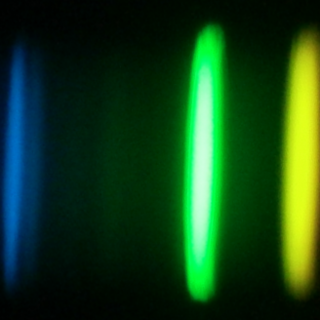Bibcode
Souto, Diogo; Cunha, Katia; Smith, Verne V.; Prieto, C. Allende; Covey, Kevin; García-Hernández, D. A.; Holtzman, Jon A.; Jönsson, Henrik; Mahadevan, Suvrath; Majewski, Steven R.; Masseron, Thomas; Pinsonneault, Marc; Schneider, Donald P.; Shetrone, Matthew; Stassun, Keivan G.; Terrien, Ryan; Zamora, Olga; Stringfellow, Guy S.; Lane, Richard R.; Nitschelm, Christian; Rojas-Ayala, Bárbara
Bibliographical reference
The Astrophysical Journal
Advertised on:
3
2022
Journal
Citations
40
Refereed citations
38
Description
Individual chemical abundances for 14 elements (C, O, Na, Mg, Al, Si, K, Ca, Ti, V, Cr, Mn, Fe, and Ni) are derived for a sample of M dwarfs using high-resolution, near-infrared H-band spectra from the Sloan Digital Sky Survey-IV/Apache Point Observatory Galactic Evolution Experiment (APOGEE) survey. The quantitative analysis included synthetic spectra computed with 1D LTE plane-parallel MARCS models using the APOGEE Data Release 17 line list to determine chemical abundances. The sample consists of 11 M dwarfs in binary systems with warmer FGK dwarf primaries and 10 measured interferometric angular diameters. To minimize atomic diffusion effects, [X/Fe] ratios are used to compare M dwarfs in binary systems and literature results for their warmer primary stars, indicating good agreement (<0.08 dex) for all studied elements. The mean abundance difference in primaries minus this work's M dwarfs is -0.05 ± 0.03 dex. It indicates that M dwarfs in binary systems are a reliable way to calibrate empirical relationships. A comparison with abundance, effective temperature, and surface gravity results from the APOGEE Stellar Parameter and Chemical Abundances Pipeline (ASPCAP) Data Release 16 finds a systematic offset of [M/H], T eff, log g = +0.21 dex, -50 K, and 0.30 dex, respectively, although ASPCAP [X/Fe] ratios are generally consistent with this study. The metallicities of the M dwarfs cover the range of [Fe/H] = -0.9 to +0.4 and are used to investigate Galactic chemical evolution via trends of [X/Fe] as a function of [Fe/H]. The behavior of the various elemental abundances [X/Fe] versus [Fe/H] agrees well with the corresponding trends derived from warmer FGK dwarfs, demonstrating that the APOGEE spectra can be used to examine Galactic chemical evolution using large samples of selected M dwarfs.
Related projects

Nucleosynthesis and molecular processes in the late stages of Stellar Evolution
Low- to intermediate-mass (M < 8 solar masses, Ms) stars represent the majority of stars in the Cosmos. They finish their lives on the Asymptotic Giant Branch (AGB) - just before they form planetary nebulae (PNe) - where they experience complex nucleosynthetic and molecular processes. AGB stars are important contributors to the enrichment of the
Domingo Aníbal
García Hernández

Chemical Abundances in Stars
Stellar spectroscopy allows us to determine the properties and chemical compositions of stars. From this information for stars of different ages in the Milky Way, it is possible to reconstruct the chemical evolution of the Galaxy, as well as the origin of the elements heavier than boron, created mainly in stellar interiors. It is also possible to
Carlos
Allende Prieto